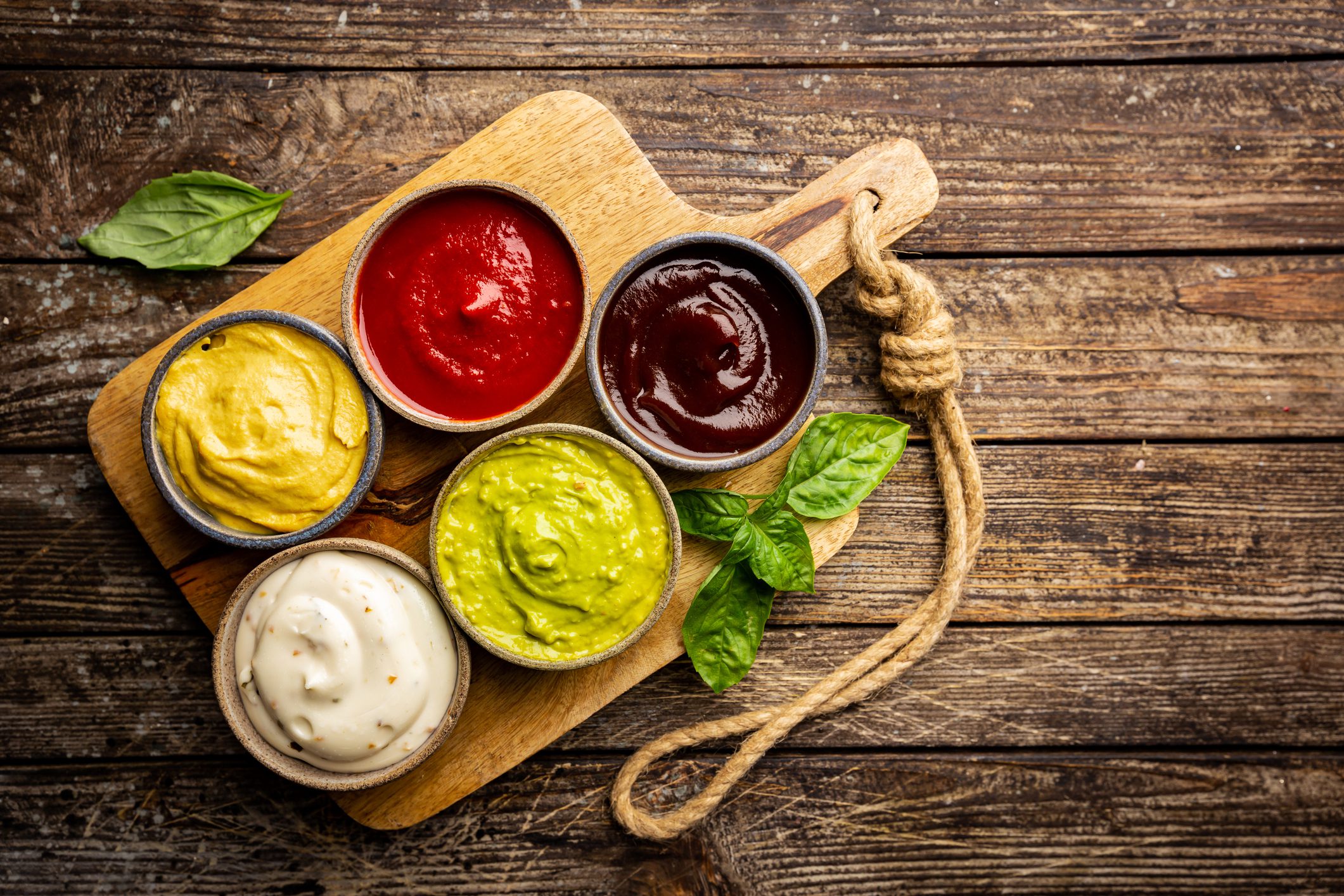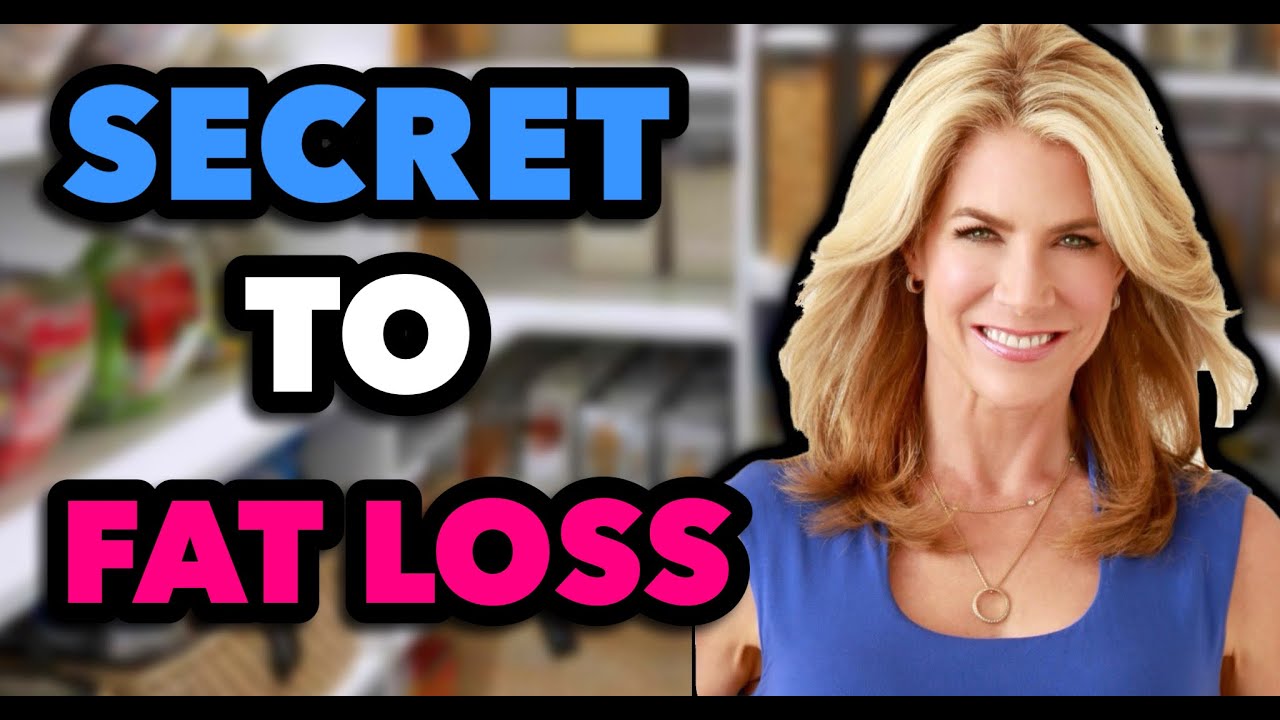Love dunking sweet potato fries in ketchup or spreading mayonnaise on a grass-fed burger? You’re not alone! Unfortunately, navigating the grocery store shelves for condiments that don’t contain sugar, preservatives, and Hi-FI foods like gluten or soy can create tons of confusion.
Consider ketchup. Most commercial brands come loaded with high-fructose corn syrup and preservatives. Ingredients like inflammatory oils and eggs make up many types of mayonnaise. Even mustard, the safest of packaged condiments, can contain sneaky ingredients like gluten.
5 Healthy Upgrades for Your Favorite Condiments
Don’t worry, I’m not going to deprive you of your favorite dips and sauces! When it comes to mustard, most commercial brands are fine. Just be mindful of those that contain added sugars (such as honey mustard) and avoid varieties with malt vinegar (derived from gluten-containing barley).
Buying other commercial condiments is a bit trickier. Homemade is always best because you know exactly what goes into the food you’re eating. But we live in a culture of convenience, and I know it’s not always realistic to make everything yourself, so I’ve included some of my favorite brands below.
If you’d prefer store-bought condiments, you’ll need to read labels carefully.
1. Ketchup
Traditional ketchup has one nutrient going for it: lycopene. This antioxidant, which gives tomatoes their red color, can protect against sun damage, support heart health, and lower the risk of some cancers.1
However, the benefits of lycopene in ketchup get seriously overshadowed by sugar. One popular ketchup brand contains both corn syrup and high-fructose corn syrup (HFCS). Research shows that HFCS can contribute to blood sugar imbalances, fatty liver disease, obesity, diabetes, inflammation, and more.2
Read about the 5 worst foods for your blood sugar in this blog.
Thankfully, some brands have gotten the message that we want healthier ketchup. One of my favorites is Primal Kitchen®’s organic unsweetened ketchup.
Be warned, some healthier store-bought condiments can get pricey. Save a few bucks by making your own. This Homemade Ketchup keeps the flavor but boosts the health benefits with organic tomatoes and apple cider vinegar, lightly sweetened with monk fruit extract (a zero-calorie sweetener).
Drizzle or dip this anywhere you love ketchup—grass-fed burgers, sweet potato fries, and chicken tenders—feeling confident that you’re not getting the sugar and preservatives in many commercial options.
2. Mayonnaise
Traditional mayonnaise provides a few nutrients, including vitamins E and K. However, most commercial varieties contain inflammatory oils such as canola and/or soybean oil. Plus, eggs are an ingredient in most mayonnaise, which can be a problem if you’re intolerant.
Then there’s Miracle Whip, developed as a cheaper alternative to mayonnaise. As if nasty oils and eggs in traditional mayonnaise weren’t bad enough, they’ve added high-fructose corn syrup!
Even among the healthiest varieties, no brand is perfect.
One of the few I like is Primal Kitchen®’s Avocado Oil Mayo, though it still contains eggs. If you can tolerate eggs, use it sparingly. If you can’t, steer clear.
Vegan varieties, such as Sir Kensington’s Vegan Mayo, often use sunflower oil, which is high in inflammatory omega-6 fatty acids.
The simple solution is to make your own mayonnaise. This Sugar Impact Mayonnaise recipe combines unsweetened coconut milk with raw cashews and macadamia nut oil for an out-of-this-world taste you won’t find in any jar. Because it doesn’t contain eggs, it’s vegan-friendly.
3. Barbecue Sauce
Nothing quite says summer like sweet barbecue sauce on your chicken, ribs, and other organic meats. But you know where I’m going with this: most commercial varieties contain sugar.
One popular brand listed on its ingredients six kinds of sugar! It contained high-fructose corn syrup, modified corn starch (which converts to sugar), pineapple juice concentrate (fructose), molasses, corn syrup, and sugar. You can see from this list alone just how many ways it can be disguised.
Plus, most barbecue sauces contain preservatives like caramel color (the production of which can result in the formation of harmful by-products) and sodium benzoate (which has the potential to form benzene, a carcinogenic chemical).
There’s no need to settle for crappy ingredients. This All-Purpose Finger-Lickin’-Good BBQ Sauce combines organic crushed tomatoes and their juices with good-for-you cider vinegar.
This recipe gives you all the sweet zest of traditional barbecue sauces, but it’s sweetened with zero-calorie monk fruit extract.
4. Soy Sauce
According to Kaayla Daniel, soy sauce has a long history. It began around 200 BC as a byproduct of chiang making. (Soybean chiang is a soupy fermented paste and precursor of miso.) In 17th-century France, soy sauce became the “secret seasoning” at court banquets.3
Today, in the US, soy sauce is a staple in most sushi bars and Asian restaurants. You’re likely to use it to kick up the flavor of sashimi or other Asian dishes. Unfortunately, soy in all its many forms has a lot of downsides.
Soy sauce contains significant amounts of histamine, for one. Some people have a histamine intolerance, which can create headaches, sweating, dizziness, itching, rashes, stomach problems, and changes in blood pressure.
Soy sauce can also contain:
- Very high amounts of sodium, which can raise blood pressure in some people.
- Monosodium glutamate (MSG), a flavor enhancer that can create symptoms like headaches and flushing.
- Toxic substances called chloropropanols, which can be produced while making soy sauce. Animal studies have found that one of them, called 3-MCPD, can damage the kidneys, decrease fertility, and cause tumors.4
Many types of soy sauce may also contain gluten.
Fortunately, soy sauce is super simple to substitute. Coconut aminos, derived from the sap or nectar of a coconut palm tree, provide a similar texture without soy’s problems.
Look for organic coconut aminos that only contain coconut and sea salt. Be aware that a tablespoon contains about six grams of naturally occurring sugar (from the coconut sap), so enjoy judiciously.
5. Honey Mustard
The tangy sweetness of honey mustard can make almost any food taste better. Its flavor can even persuade the most veggie-phobic kid or finicky household members to eat their broccoli!
Traditional varieties, however, contain… where do I start? One brand of commercial honey mustard I looked at included sugar, corn syrup, honey, molasses, modified corn starch (which converts to sugar), soybean oil, and preservatives like sodium benzoate and caramel color. Quite the concoction.
I’ve replaced honey mustard in my recipe repertoire with this Almond Butter Dipping Sauce, which combines almond butter with fresh lime juice and coconut aminos for a similar tang and sweetness without the problem ingredients.
Pair this sauce like I did with lemongrass chicken skewers over cauliflower rice for a dinner that’s a hit with kids and adults alike. And feel free to drizzle it anywhere you need a sweet, flavorful dipping sauce (and be prepared for people to ask you for the recipe!).
More Strategies to Upgrade Your Favorite Condiments
With these recipes and recommendations, you never need to settle for sugar-and-preservative-loaded condiments ever again. While a few store-bought brands make the grade, I always prefer that people make their own. If you’re buying packaged condiments, I can’t emphasize enough reading ingredients very carefully.
A few guidelines:
- Fewer ingredients are always better.
- If you can’t pronounce the ingredient, put it back on the shelf.
- Just because a brand is positioned as healthy doesn’t mean it can’t contain problematic ingredients. Ditto for organic condiments: organic sugar is still sugar.
- Ideally, condiments should contain zero added sugar and as little naturally occurring sugar as possible.
- Be very careful about “sugar-free” claims. Many such condiments contain artificial sweeteners.
The views in this blog by JJ Virgin should never be used as a substitute for professional medical advice. Please work with a healthcare practitioner concerning any medical problem or concern. The information here is not intended to diagnose, treat, or prevent any disease or condition. Statements contained here have not been evaluated by the Food and Drug Administration.
*These statements have not been evaluated by the Food and Drug Administration. This product is not intended to diagnose, treat, cure, or prevent any disease.
References:
- Daniel, Kaalya. The Whole Soy Story. MD: Newtrends Publishing, Inc.; 1st edition (March 10, 2005).






